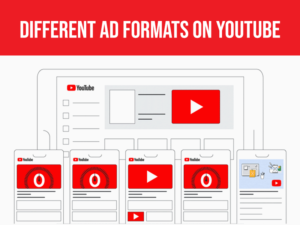People go on social media for many reasons. To connect with others, be entertained, inspired, filled with positive feelings… which makes social media the perfect platform to reach customers in their community the right way!
A great video that can be viewed and shared on social media lets you start a conversation with your audience in the best possible way. However, if social videos play a part in your marketing strategy already, you might know by now they don’t secure engagement by themselves.
There are many possible causes for a social video to fall short of expectations or get lost in the endless feeds. And if yours aren’t performing as you’d have hoped, you’ve come to the right place.
After all, in this piece, we’ll talk about the most common problems with social videos and how to fix them.

- Locate your Audience
When outlining your strategy, you’ve probably already decided who your videos are for: your target audience. Be it Gen X, Millennials or Gen Z, their age, preferences, and consumer habits will dictate which social media platform they probably hang out on.
If you try to reach Gen Z on Facebook, for example, you are going to have a tough time!
Gen X is the oldest and most economically consolidated, ranging from 40 to 60 years old. They use Facebook and Twitter mostly to seek information and connect with friends.
Millennials have the most buying capacity. These are your 25-40 years old who get on social media for entertainment and inspiration. They are most likely to heel the word of peers or influencers on Facebook, Instagram, and YouTube when researching products since they tend not to trust traditional advertising.
25-year-olds and younger are the Centennials or Gen Z. They hang out on TikTok, YouTube, Snapchat, and Instagram to be entertained, although they seek an emotional connection when considering a brand. They have high expectations for online content and want the brand’s values to align with their own when putting down the money.
As you can see, different groups tend to favor one platform or another, so it always pays off to learn about your audience and the best place to engage them!
2. Tailor your Content
You thought you could get away with uploading the same video across all social media platforms and get consistent engagement rates across the board? Think again!
You are reaching out to people who spend many hours on social media – they know the playground. Shared-across-platforms videos tend to stick out like a sore thumb on the user’s feed since they aren’t tailored to the style of content of that particular social media.
Your goal should be to integrate your content in a way that feels organic and unobtrusive to each platform you are uploading to. Not all video formats or types of content work equally well on every platform, so you should try and figure out what works for your particular strategy.
For example, content-wise, product reviews shine better on YouTube, while announcements and behind-the-scenes fit the Stories format. Animated videos work nicely on Facebook and Instagram, but for Snapchat and TikTok it is better to feature people speaking to the camera.
As for formats, every social media platform gives you the tools to upload native content, so have each platform’s requirements present when producing your social videos. Since it might be hard to successfully convert one social media video to a different platform retroactively!
Consider this: you can upload longer videos on your YouTube page, but it won’t be easy to trim for shorter-video platforms if you didn’t plan ahead for it.
Instagram Stories, Snapchat, and TikTok favor portrait orientation, high resolution, and full-screen. The people that consume these ephemeral content pieces tend to favor authenticity and a spur-of-the-moment feel. The same goes for IGTV, except that its videos there aren’t ephemeral and can be significantly lengthier. Meanwhile, durations for the former, shorter options range from 3 seconds up to 2 minutes.
In-feed videos for Facebook, Instagram, and Twitter are more versatile – up to three aspect ratios to choose from, same specs for organic and paid videos, and around the 2-minutes sweet spot.
So, videos from and for these three platforms can be a bit more interchangeable in respect to formats – but maybe not so much in content. Facebook focuses on social engagement, Instagram on inspiration, and Twitter is the place to go for the freshest news on current events, sports, and entertainment. Keep that in mind!

3. Optimize your Copy
From the title to the hashtags, the copy surrounding your video should attract and engage the consumer.
For starters, you mustn’t neglect keywords and hashtags. Their purpose is to boost organic traffic to your videos, and they can provide a great avenue to increase your content’s SEO and your reproduction numbers.
Once the audience has come to you, a clever title can halt the scrolling, but it should also help tease what the video’s about and how it might be useful or interesting to them whenever possible.
By the same token, use emojis wisely on your captions to catch the eye, add color, and set your tone.
Much of the path to engaging audiences is already paved on the leading social media platforms. All of them encourage native uploads, so they offer the tools to reach your target audience through copy successfully. Make use of them!
4. Use Attractive Visuals
If you want to beat the scrolling on social media, your videos need an eye-catching thumbnail. A good tip to start is to have, whenever possible, a human face or some text that piques people’s interest as part of the thumbnail since people tend to be drawn to that sort of thing.
That said, the most important thing to keep in mind here is that if your thumbnail is confusing, it will most likely result in the consumer scrolling past your video. So, take some time and use editing tools to optimize your thumbnails instead of going with the default. The results are worth it.
Another thing to consider is that you have to optimize those first frames of your piece to capture interest immediately.
Your video’s initial frames should be as engaging as possible. If the viewer makes it past the first few seconds, they will probably continue to watch the whole piece if your content is good enough.

5. Keep it Brief
Unless your video is incredibly engaging from the get-go – hooray if it is! – the audience will probably check out the length before committing to watching. If it’s too long, dragging too much, or if they feel you aren’t getting to the point, they might consider it not worth it and move on.
Sure, some platforms allow for a bit more content – but the winning bet is to make your videos as snappy and to-the-point as possible. Brevity is the soul of social video!
Also read:- White Label SEO Services
Moreover, if you want your audience to hang around until the end, you should foreshadow important topics you will cover further ahead right from the start.
Alternating between shots of people, objects, direct-to-camera, and voice-over can also help you keep things interesting throughout the video as well. Be bold and dynamic – you don’t want to waste your precious seconds.
6. Use Timely Content
Another key to social video content is to make it relevant for your audience and the present moment. Current events and trending topics should guide your content, as well as knowing your target’s interests. This way, you start a conversation rather than focusing entirely on promoting your product – the surest way of shooing away the consumers.
On your feed, you should keep in mind the 80/20 rule: make 80% of your content for your audience, be it entertainment or information, and 20% specifically to promote your brand and product. Otherwise, you will come across as too salesy, and end up not engaging your target.
7. Make it Accessible
Most people consume social media content on their phones, and in exchange for that portability and streamlined design comes the inconvenience of unintentionally blasting your video’s audio on the bus, at work, or while one’s spouse is sleeping.
Your social videos should work as well silently as they do with the audio on if you want to reach as much view time and viewers as possible.
Your video’s sound design could simply add an extra layer of emphasis to your video. But since it is essential to have content people can engage with during mute play, your best move here is always to caption your pieces.
YouTube and Facebook are providing auto-captioning tools that you can – and should! – review and edit for accuracy. Instagram, Twitter and Snapchat require videos already captioned. Last but not least, providing accessibility for the hearing impaired is always a desirable thing as well.
Text overlays are also an excellent contribution to your muted video’s clarity that can complement and enhance your piece’s visual appeal. Plan ahead so your shots have enough space for it and the composition gets completed instead of ruined by text during editing.

8. Use the Right CTAs
Let’s not forget the primary purpose of your social videos – to engage consumers and prompt them to take action. As they are no mind-readers, it’s paramount the Call-To-Action in your content is clear and located where they might find it.
It was usual practice to have the CTA at the videos’ middle or end, but now with social media, there’s just no guarantee the audience will reach that point. So, make sure to have them throughout the entire video.
Also read:- write for us technology
That being said, be as organic as you can when placing your CTAs! They shouldn’t stand out to the audience in a way that feels forced or takes them out of the content.
It’s nothing less than a challenge to find the right spot to give discrete yet compelling directions. But if you do it right, your video strategy’s effectiveness will go through the roof.
Before you go
Besides the strategies we’ve discussed to boost your social videos back to a healthy engagement, let us offer you this last piece of advice: keep them fresh!
Having the exact same content across all your social media will probably get boring very quickly for your multi-platform audience, and therefore fail to have the impact you’d want on your audience.
Also read:- Technology write for us
Video trends change all the time, and you shouldn’t be afraid to try a bit of everything. See what works best for your brand, your audience, and the social platform you are going for, and focus on that. Seize what each social media has to offer in terms of customization, and make it work to your strategy’s benefit.
Also read:- write for us tech
Even if it’s a bit outside of your usual wheelhouse, don’t be afraid to experiment – it’s the best way to find the right fit for your brand.
Author bio:
Hello, I am a professional SEO Expert & Write for us Technology blog and submit a guest posts on different platforms- we provides a good opportunity for content writers to submit guest posts on our website. We frequently highlight and tend to showcase guests.




